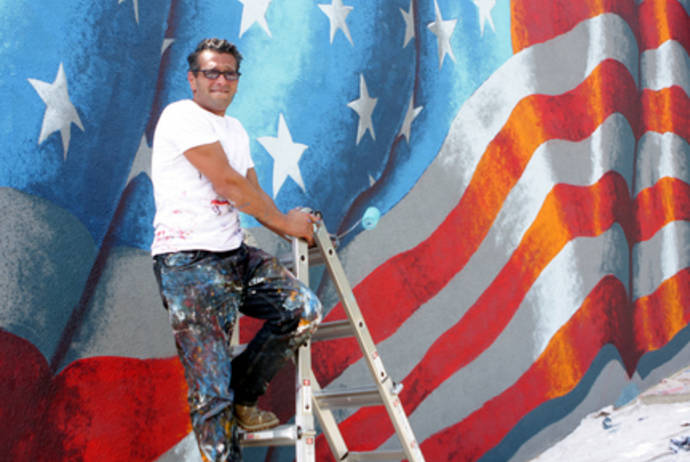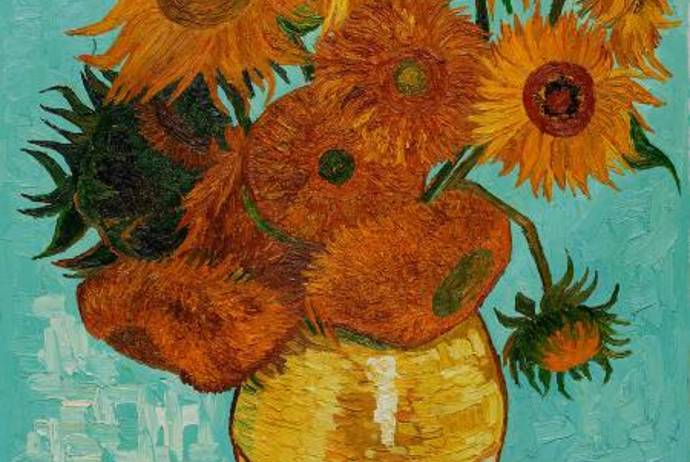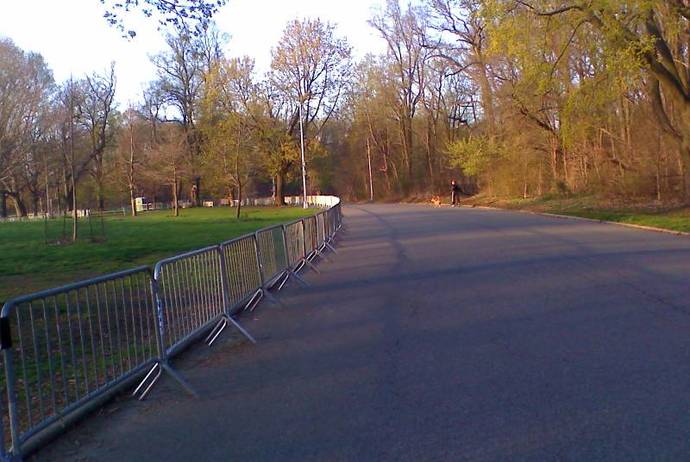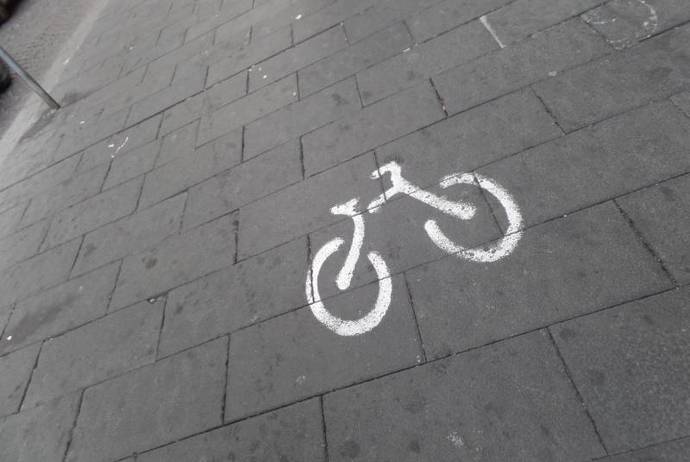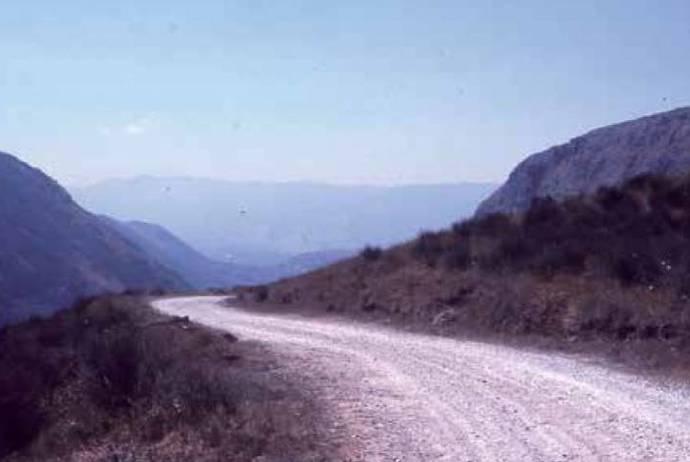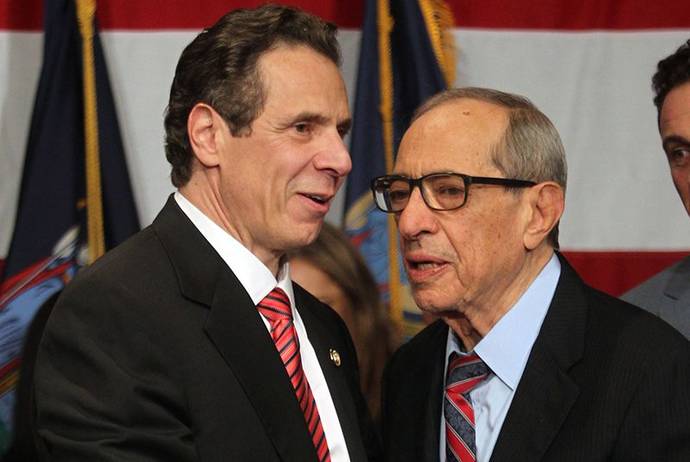Every few years, because it makes little sense also to me, I feel the need to explain American politics to Italians and Italian Americans alike. This year the center of my attention is the inordinate support expressed by Italian Americans for the presumptive Republican Party Presidential candidate “The” Donald Trump. Thank God, for me it is only half of a reality check. A major part of the problem of deciphering his Italo-appeal is the Huuuuge mountain of pseudo-journalistic effluence that has inundated American mass media about the Trumpster. In the entertainment business, and therefore it follows --- American politics -- there is no such thing as bad coverage even when it stinks to high heavens. In the past I only complained in writing about the likes of the “Fair and Balanced” Fox News and the "News doesn't have to be boring to be news," New York Post, but since the U.S. Presidential campaign season began in earnest I’ve added “Lean Forward” MSNBC and “All the news that’s fit to print” The New York Times to my list of unreliable sources.
One Salon.com writer, Fedja Buric, thought Trump might be channeling Benito Mussolini, and with Trump’s chin skyward profile he might have a point. In “Trump’s not Hitler, he’s Mussolini,” Buric also argued that the anti-intellectualism of the Republican Party has led to a modern fascist movement in America. Less ominously,
Alan Rappeport of The New York Times wrote that The Trumpster was “… reviving memories of someone who stirred local passions like few others: Frank L. Rizzo of Philadelphia.” The popularity of the “Big Bambino” Mayor was based on his take no prisoners attitude toward law-breakers, as well as social activists, and the noncompliant press. Most recently in the Times Frank Bruni provided the Italian take on Trump who is seen as a somewhat perverse version of Silvio Berlusconi; a super-rich businessman, who knew how to use the media, and who promised to make Italy great again via a “new Italian miracle.” Having more than enough unflattering details, the similarities in their mutually repugnant views of women and immigrants were left for a subsequent column, I suppose, on why “Italy Feels Our Pain.”
It is not difficult to explain Trump’s exalted place in Presidential preference polls among more or less likely Italian American voters. Italian Americans have been moving over into the Republican and more Conservative ranks as registered voters for some time. Even when registered as Democrats (DINOs – Democrats In Name Only) or simply “independent” they list starboardly. There’s is not an ethnic preference vote. Today’s Italian American voters were as likely to vote for their semi-co-ethnic Bill De Blasio as for Barack Obama. His name also ended in a vowel but many Italian Americans I have had the pleasure (?) to meet continue to believe, as does birther Trump, that our current President is a Kenyan-born Muslim.
In my experience, where Staten Island (La Bella Isola) goes, so does the Italian vote. With about a half a million residents, Staten Island is the most conservative borough in New York City. As evidence, La Bella Isola has been trying, unsuccessfully, to secede from the “too liberal” Gotham City since the 1970s. In 1993 65 percent of its voters said, “yes, we can (leave)” in a 1993 referendum. According to Politico in Staten Island: “The mostly white, middle- and working-class Republican voters here have embraced the brash, Queens-born mogul as a hometown hero. So have some of the top GOP officials on the island, including Councilman Joe Borelli, who’s become a go-to Trump surrogate on national television…” As to Borough or Countywide elected officials I think only one is a Democrat and he, ex-Congressman Michael McMahon, also tilts much of the time to the right. As to prominent Italian American elected officials representing Staten Islanders who are more likely to upset Trump's bandwagon than jump on it are New York State Assemblyman Matthew Titone and New York Sate Senator Diane Savino.
As to the confirmation of my earlier prediction; in the April 16, 2016 Republican Presidential Primary about 80% of Staten Island’s Republican voters thought Donald Trump should be become the Leader of Free World, and when necessary make decisions about whom to nuke. This was about the same outcome in other more or less identifiable Italian American voting areas in New York State. In contrast, all of the full and partial Italian Americans in my immediate family voted in the Democratic Presidential Primary for Bernie Sanders (whose name like Barack’s ends in a vowel). I had predicted he would get practically bupkis (niente di niente) when it comes to Italian American voters. Bernie stopped for a visit with one of my neighbors on Ninth Street in hyper-gentrified Park Slope, Brooklyn on his way to a HUUUGE rally in Prospect Park that was steps away from my house. I didn’t get to the rally but did manage to get a “FUTURE TO BELIEVE IN” (UN FUTURO IN CUI CREDERE) sign for my front window.
Given this Italic rightward lean, one might ask who are the most prominent of New York Italian Americans supporters of The Donald? Googling on The Web I found, among many others, Ex-America’s Mayor and failed 2008 Presidential candidate Mayor Rudy Giuliani; real estate mogul and failed New York State Gubernatorial candidate Carl Paladino; as well as current New Jersey Governor and failed Republican Presidential candidate Chris Christie. Trump also has local support in the form of Republican Party Chairmen Arnaldo Ferraro (Kings County --- AKA Brooklyn), John LaValle (Suffolk County --- AKA White-Landia), Joseph Mondello (Nassau County --- AKA White-Landia) and Nassau County Executive Ed Mangano.
Among entertainment luminaries is Scott Baio, AKA “Chachi (Ciacci) Arcola.” The most controversial public figure is probably Joe Arpaio, “America’s Toughest” Sheriff of Maricopa County, Arizona who, according to RealClear Politics, re-endorsed Trump at a Las Vegas rally in February mumbling in part: “What I like about him, he tells it like it is, most politicians, they are very politically correct, have you noticed? Nobody says anything, I can never understand. I can understand when he talks, some may not like it but that's tough...” Arpaio is not bright enough to understand that the HUUUUGE wall built by the Mexican government will probably put him out of the job by keeping out Mexicans.
As for international supporters of Donald Trump there are many fellow anti-immigrant Know Nothingers such as Matteo Salvini, leader of the Italian secessionist Lega Nord; Frenchman Jean-Marie le Pen founder and former leader of the neo-fascist Front National; and Geert Wilders, the Dutch politician who single-handedly changed the perception of Holland as a leading nation of tolerance. Last but not the least is, on the order of Kim Jong-un, the North Korean News Agency the Democratic Republic of Korea Today.
I am a supporter of Bernie Sanders, the Vermont Senator who is proud to call himself a Socialist. Most New York’s Italian American voters feel slight connection to him or those found in Gerald Meyer’s The Lost World of Italian American Radicalism: Politics, Labor, and Culture (Greenwood 2003). According to Meyer “Radicalism had a powerful but largely unacknowledged influence in the Italian-American community.” His book tried to “restore to Italian-American history the radical experience that has long remained suppressed, but that nevertheless helped shape both the Italian-American community and the American left.” Chief among New York City’s Italian American leftist heroes was Harlem Congressman Vito Marcantonio (1935 -37, 1939-1945). Ironically, Vito ran first as a Republican when it was a “progressive” party, and later with the Social Party splinter --- the American Labor Party (ALP). Fiorello LaGuardia also was supported by the ALP. Current Trumpsters, NYC Council Members Vincent Ignizio and Joe Borelli, contrast sharply with Peter Cacchione, a Brooklyn Communist Party City Councilman, who Meyer wrote “… strengthened the presence of the left within New York City’s Italian American communities.” Cacchione, popular among Italian Brooklynites, was elected to three consecutive terms (1941 - 1947).
There is another element that must be considered as to why Italian Americans, especially Italian American men, support Donald Trump. A constant theme is how he “speaks his mind,” “doesn’t take crap from anybody,” and “says out loud what we are thinking.” Despite all the distance that Italian Americans have travelled as far as education, income, and prestige “we” still carry the scars of the poor and working class cultures in which we and/or our parents, and definitely our grandparents were raised. To quote one of “our” greatest cultural heroes:
For what is a man, what has he got?
If not himself, then he has naught
To say the things he truly feels and not the words of one who kneels
The record shows I took the blows and did it my way!
However, the Frank Sinatra song I wish more Italian Americans would sing today is:
The house I live in, a plot of earth, a street
The grocer and the butcher, and the people that I meet
The children in the playground, the faces that I see
All races and religions, that's America to me!































